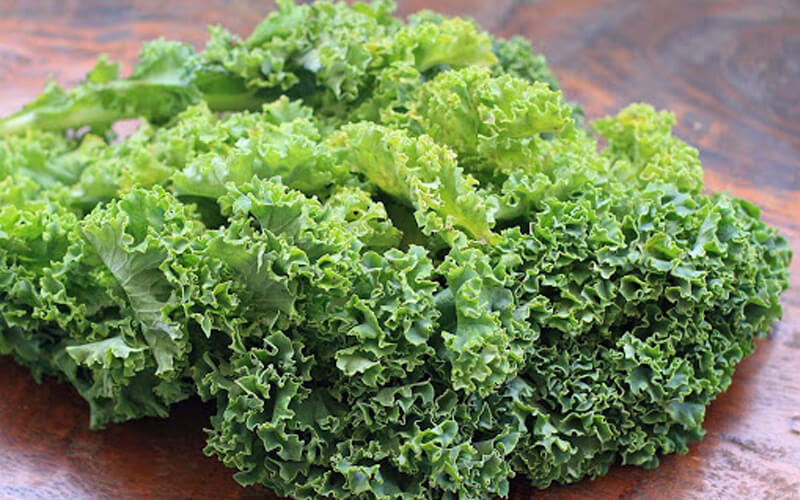Why Kale belongs in every Vancouver garden
After two decades of gardening and landscaping in Vancouver, I’ve seen plenty of crops have their moment of popularity and then fade away. But kale? Kale has earned its permanent spot in my garden beds. This leafy green is more than just another vegetable, it’s a survivor, a nutrient powerhouse, and one of the most reliable crops you can grow in our West Coast climate.
Kale thrives in Vancouver’s mild, rainy weather. It actually gets sweeter after a touch of frost, and it has the rare ability to keep producing when most of the garden has already packed it in for the season. But here’s the truth: kale only rewards you if you set it up for success. Over the years, I’ve learned sometimes the hard way, that timing, soil preparation, and pest protection can make or break your harvest. Today, I want to share what I’ve learned so you can avoid the same mistakes and enjoy kale at its best.

This leafy green is more than just another vegetable, it’s a survivor, a nutrient powerhouse, and one of the most reliable crops you can grow in our West Coast climate.
Why Grow Kale? Benefits You Shouldn’t Ignore
Kale isn’t just another trendy “superfood.” It earns that reputation. It’s packed with vitamins A, C, and K, calcium, and antioxidants, giving your immune system a boost when you need it most—in the colder months. Beyond nutrition, kale’s cold-hardiness makes it almost tailor-made for Vancouver gardeners. While lettuce bolts in the summer heat and disappears at the first hint of frost, kale just keeps producing.
From a cook’s perspective, it’s hard to beat the versatility. Toss baby leaves into a smoothie, sauté mature leaves with garlic, bake them into chips, or stir them into winter soups and stews. Once established, kale doesn’t need much beyond consistent watering and the occasional feed, which makes it one of the lowest-maintenance crops you can grow.
:quality(75)/nuoc_ep_cai_kale_cover_08766ebce9.jpeg)
Toss Kale’s baby leaves into a smoothie, sauté mature leaves with garlic, bake them into chips, or stir them into winter soups and stews.
The Best Time to Plant Kale in Vancouver
If there’s one mistake I see gardeners make with kale more than any other, it’s planting at the wrong time. Kale is a cool-season crop. Plant it too early in the summer heat, and it sulks. Plant it too late, and frost will freeze seedlings before they can take off.
In Vancouver, you really have two windows. For spring planting, get your seeds in the ground between early April and late May for summer harvests. But for the richest flavor and longest season, fall planting is the clear winner. Sow seeds or set out transplants between early August and mid-September, no later. That way, plants will establish strong roots before the first frosts arrive. Miss that window, and you’ll be staring at spindly seedlings that simply don’t have time to mature.
Preparing Your Garden or Pots – for Kale
Kale has a reputation for being hardy, but don’t confuse hardy with invincible. If you give it a strong start, kale will reward you with thick, dark-green leaves that taste as good as they look. If you neglect the basics, you’ll end up with spindly plants that never quite take off.
The foundation is always the soil. Kale loves loose, well-drained soil that’s rich in organic matter. Before planting, I always work in a generous amount of compost or worm castings. This not only feeds the plants but also improves soil texture, helping roots spread easily and anchor the plant against winter winds. If your soil is heavy clay—a common challenge in Vancouver—don’t skip this step. Amending with compost and even a little coarse sand can transform it into a friendlier home for kale.
Location matters, too. Kale thrives in full sun, especially during Vancouver’s cooler months, when sunlight is already limited. That said, kale is surprisingly forgiving; in the heat of midsummer, partial shade actually protects it from stress. I often tell gardeners with smaller yards: don’t hesitate to tuck kale along the edge of a flower bed or between taller vegetables. It’s both practical and ornamental.
Container growing is equally rewarding. If you don’t have a yard, a balcony or patio can be just as productive. Choose containers at least 10–12 inches deep with good drainage holes. Terracotta pots breathe well and prevent overwatering, while plastic containers retain moisture longer, which can be helpful during dry spells. Just remember: container-grown kale relies on you more heavily for consistent feeding and watering, so keep an eye on it.
Planting Kale the Right Way
Starting from seed is straightforward, but timing and spacing are critical. Sow seeds about half an inch deep, and space them roughly a foot apart to give each plant breathing room. If you overcrowd them, the leaves won’t develop their full size and the plants become more vulnerable to pests. When seedlings are two to three inches tall, thin them so they stand 12–18 inches apart. The thinnings make excellent baby greens for your salad bowl, so nothing goes to waste.
For those who prefer a quicker start, transplants are a great option. Dig a hole just deep enough to hold the root ball, firm the soil gently around the stem, and water thoroughly. If you’re planting in late August or September, transplants give you the head start needed to establish before frost.
Here’s a step many gardeners overlook: protection. Kale belongs to the brassica family, which means it’s a magnet for cabbage moths and flea beetles. These pests can shred leaves in days. The simplest solution? Cover your plants from day one with insect netting or a lightweight row cover. It doesn’t just stop insects—it also provides a buffer against wind and unexpected cold snaps. Trust me, I’ve skipped this step before, and the sight of kale leaves full of holes is enough to break any gardener’s heart.

For those who prefer a quicker start, transplants are a great option. Dig a hole just deep enough to hold the root ball, firm the soil gently around the stem, and water thoroughly.
Caring for Kale Through the Seasons
Once kale is established, the care it needs is surprisingly simple. Consistent moisture is key. The soil should never be bone dry, but soggy roots are just as damaging. I aim for steady, even watering, then top the soil with a thin mulch layer to lock in moisture and suppress weeds. In Vancouver’s rainy fall, mulch also prevents heavy rain from compacting the soil.
Feeding kale every three to four weeks with compost tea or an organic fertilizer keeps the leaves vibrant and nutrient-packed. Don’t overdo it, though—too much nitrogen produces lots of leafy growth at the expense of flavor. I’ve found that gentle, steady feeding gives the best results.
Weeding doesn’t need to be a chore. Kale doesn’t like competition, but a quick hand-pull once a week is all it takes to keep beds clean. In fact, one of the reasons I love kale is that it’s one of the least demanding crops in the garden.
The real magic comes when the temperatures drop. Kale laughs in the face of cold weather. In Vancouver, a simple cloche or cold frame is usually enough to extend your harvest well into January. I’ve had kale plants that not only survived a light snowfall but seemed to taste better for it. Frost triggers a natural process that makes the leaves sweeter—an incredible reward for anyone who plants at the right time.

Weeding doesn’t need to be a chore. Kale doesn’t like competition, but a quick hand-pull once a week is all it takes to keep beds clean. In fact, one of the reasons I love kale is that it’s one of the least demanding crops in the garden.
Darell’s Top 5 Kale Mistakes (and How I Fixed Them)
After twenty years of growing kale, I’ve made enough mistakes to fill a compost pile. Here are the big five I see—and the lessons they taught me.
The first mistake was planting too late. I once sowed seeds in late September, assuming kale would “tough it out.” Instead, the seedlings froze solid. The fix? Never sow later than early September, and use sturdy transplants if you’re cutting it close.
The second mistake was poor soil prep. One season I got lazy and skipped composting. The result was pale, stunted leaves that looked like they’d missed every meal. Lesson learned: enrich the soil before planting.
Third, pests. One year, cabbage worms had a banquet on my kale patch, leaving nothing but lacework leaves. Since then, insect netting has become non-negotiable.
The fourth mistake was overwatering. Out of guilt, I kept drenching my plants, only to watch them languish in soggy soil. Kale prefers steady, even moisture—not drowning. Mulching keeps that balance just right.
And finally, harvesting wrong. In the early years, I’d pluck leaves randomly, leaving the plant looking like a bad haircut. These days, I only take the lower leaves first and keep the crown intact. That small shift has turned each plant into a continuous producer instead of a one-time harvest.
Harvesting Kale the Right Way
One of kale’s greatest gifts is its “cut and come again” nature. You can start harvesting when leaves are 8–10 inches long. Always pick from the outside, leaving the center growth untouched. Done right, a single plant will feed you for months.
And here’s a gardener’s secret: kale actually tastes better after frost. Those crisp November mornings bring out its sweetest flavor, transforming what some call a “bitter green” into a delicacy worth savoring.
Common Questions About Growing Kale
Can kale survive winter in Vancouver?
Yes. Our mild winters mean kale often produces into January. Frost doesn’t hurt it—in fact, it improves the taste.
Should I grow kale in pots or in the ground?
Both are excellent options. Pots offer mobility and control, while garden beds give the roots more room to develop.
How do I keep bugs off my kale?
Insect netting is the best defense. Companion planting with herbs like dill or cilantro can also help confuse pests.
How often should I water?
Aim for consistent moisture. In summer, expect to water two to three times a week. In fall, rainfall often takes care of it.
How long until kale is ready to harvest?
Most varieties mature in 55–70 days, but baby leaves are ready in just 30.
Conclusion: Why You Should Grow Kale This Season
If there’s one crop worth planting this fall, let it be kale. It’s forgiving, it’s resilient, and it fills your kitchen with nutrient-rich greens long after other vegetables have given up. After twenty years of tending gardens across Vancouver, I can honestly say kale delivers more reward for less effort than almost any other crop.
So don’t wait until it’s too late. Grab your seeds, prepare your soil, and plant before mid-September. Your winter self will thank you when you’re pulling crisp, sweet leaves from your garden while everything else lies dormant.
Visit Us at DH Garden Centre
At DH Garden Centre, we’ve got everything you need to grow kale the right way organic seeds, hardy seedlings, nutrient-rich compost, and sturdy pots. Stop by before mid-September and let’s make this your best kale season yet.
📍 Address: 3742 West 10th Avenue, Vancouver, BC
📞 Phone: +1 604-929-7335
✉️ Email: Contact@dhgardencentre.com
🌐 Website: dhgardencentre.com
📲 Follow us: Facebook | Instagram | YouTube


